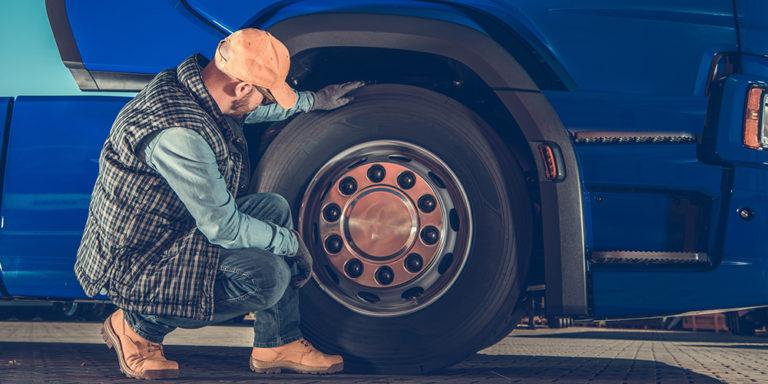Quick Guide To Understanding Diesel Particulate Filter (DPF)
February 21st, 2022
By Arrow Truck Marketing
WHAT’S IN THE AIR
NOx
and
Soot
– these have the most impact on our environment
NOx ( Nitrogen oxides)
are a group of highly reactive gases containing nitrogen and oxygen in varying amounts
Nitrogen dioxide,
along with particles in the air, can often be seen as a reddish-brown layer over many urban areas.
Particulate matter (Soot) is the visible exhaust from the engine.
Soot is made up of unburned fuel, carbon, and other solid materia.
Diesel Particulate Filter
MEETING 07 EPA LEVELS
To meet EPA ’07 levels for particulate matter, all manufacturers turned to an exhaust after-treatment system
The technology in this after-treatment system is the
“Diesel Particulate Filter”.
Instead of exhausting soot into the atmosphere, the DPF traps the soot, and then uses heat to oxidize it. So what exits the exhaust is much cleaner air.
HOW DOES IT WORK
The DPF is actually a
ceramic filter
that has thousands of tiny channels. As the exhaust passes through these channels, soot is trapped along the channel walls and is prevented from exhausting through the stacks.
The ceramic filter looks like a
honeycomb structure.
This structure is covered with a layer of chemical catalyst that contains small amounts of precious metal, usually
platinum
or
palladium
, that interact with and oxidize pollutants in the exhaust stream (CO and unburned HCs), thereby reducing poisonous emissions.
Soot trapped along the channel walls prevent it from exhausting through the stacks.
Every once in a while, the DPF must remove the soot that has built up along the channel walls to remain effective.
This process is called
“Regeneration.”
Regeneration is an
oxidation process
that uses heat to remove the soot from the filter.
The regeneration process is actually pretty simple.
There are two stages in this process: 1)
ACTIVE & 2) PASSIVE
PASSIVE REGENERATION
Passive regeneration
occurs naturally
under steady driving, when the engine achieves the required operating temperature.
The DPF contains an oxidation catalyst that is coated with precious metals.
Under normal highway driving, passive regeneration takes place as the catalyst in the DPF heats up enough to oxidize the soot and turn it into CO2.
The CO2 exits through the exhaust stack.
Any residues left behind are converted into harmless ash that collects in the DPF canister.
The process is continual,
so whenever the vehicle reaches operating temperature, the DPF will begin passive regeneration.
Passive regeneration occurs naturally under steady high engine loads.
Catalyst in DPF oxidizes soot when exhaust temperatures reach about 600° F
ACTIVE REGENERATION
Over time, passive regeneration is not enough to prevent soot from building up in the DPF and that’s when the second stage of cleaning is used. This is called
“Active Regeneration.”
The truck engine computer indicates that the DPF needs cleaning, and if the operating temperature is high enough, it
automatically
initiates an active regeneration.
In general, active regeneration begins when a small amount of fuel is introduced into the exhaust stream between the turbocharger and the DPF.
This fuel is atomized into an extremely fine spray that does not burn. Instead, when it makes contact with the catalyst on the DPF, it generates intense heat -upwards of 1100 degrees Fahrenheit –that oxidizes any remaining soot on the ceramic filter.
Again, the soot is oxidized and CO2 exits the stacks and ash collects in the canister.
Small amount of fuel is introduced into the exhaust stream to create intense heat – upwards of 1100 degrees Fahrenheit – to oxidize any remaining soot.
Active Regeneration
may take place once a day
, depending on the type of driving.
Each regeneration
can take 30 minutes or more
.
If you stop or slow down, the regeneration
may be interrupted
and
may need to repeat.
AUTOMATIC REGENERATION
In general, after treatment systems are
self-monitoring
. When the soot level is high enough, the system automatically initiates an active regeneration.
Vehicle idle speed may increase when stopped to maintain proper regeneration conditions.
PARKED REGENERATIONS
There will be times when drivers will need to perform a
manual
or “
parked
” regeneration. This may be because they cancelled a regen, or an automatic regen had started, but was interrupted when the vehicle was stopped.
Parked regens are active regenerations
initiated by the driver
when the vehicle is stopped, engine running, with the parking brake applied. Usually there is a dash switch of software based method for initiating a parked regen
Cautions
Extremely high exhaust temperature during active regeneration.
Stay clear of combustibles and people
Crowded worksites, fueling stations, tunnels
DRIVING WITH DPF
Two mounting options
Mounted on frame close to turbo exhaust
Back of cab
Fuel requirements
DPF requires use of
Ultra Low Sulfur Fuel
and approved
diesel CJ4 engine oils
Cleaning
DPF requires professional cleaning every 150,000 – 250,000 miles
Quick Guide To Understanding Diesel Particulate Filter (DPF): (Download PDF)
This information is not intended to be a legal document or to be used as official EPA information or instructions. Not responsible for omissions, errors or legal content.

